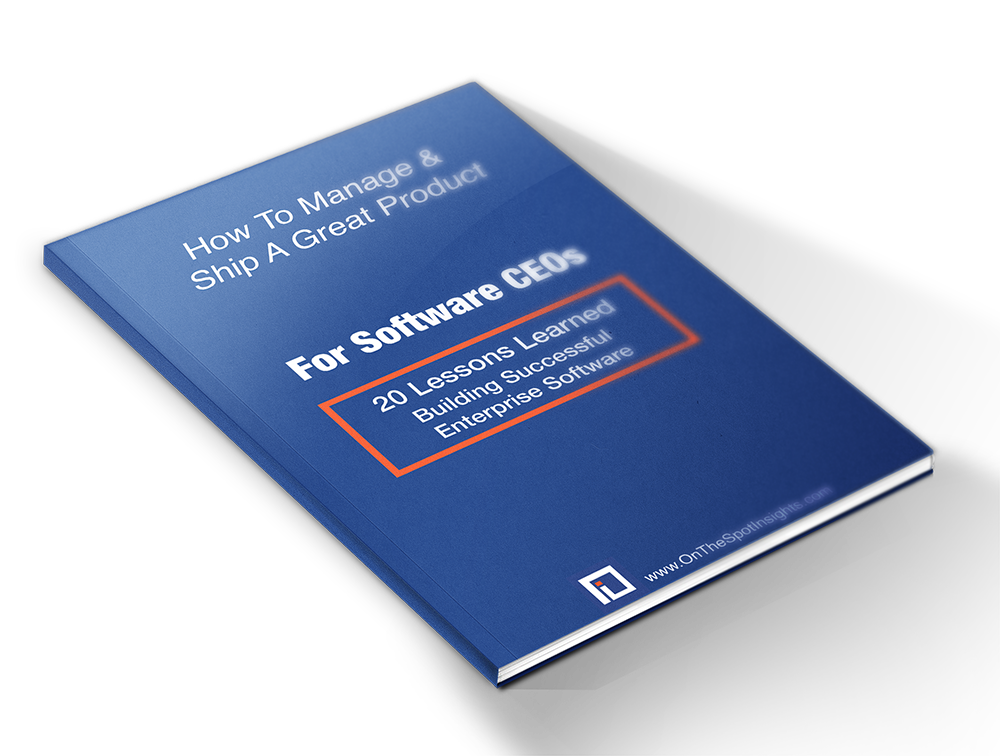The Right Process For Customer Acquisition And Retention

Learn How To Manage & Ship A Great Software Product
Get 20 lessons about how Software CEOs can grow their team, improve their culture, and create efficient work processes on the way to building a massively successful Software Company.
There is so much material out there offering pointers about acquiring customers, it’s tempting to leave that topic alone. But whatever approach you take, there are a few things to keep in mind:
Expect to have multiple marketing plans. Don’t start with an assumption that having ONE marketing plan will fit all customers. Assume each user is unique and help them, one-by-one, become customers. That means starting with a unique “marketing plan” for each user. Then group target customers into market segments that share characteristics, and have a marketing plan for each of those segments.
Get the customer’s hands on the wheel. Whether it’s your demo or a tutorial or some other part of your onboarding process, let the customer drive your software as soon as possible. And be right there to field questions and keep it moving.
Minimal input to start. Give the user a result as quickly as possible. Start with most of the input already there and let the customer click RUN and get a solution. Then educate by showing her how to change that solution by changing one item of input at a time.
Use that customer’s actual problem as a demo. It’s hard to get people to try new applications. Consider asking prospective customers/users to use a real problem they’re working on. If possible, let the customer continue to work with the tool they’ve been using and let your team member work on it alongside them. That way you can prove you can solve THEIR problem with YOUR software — faster, better, cheaper than they’re doing with the one they’ve been using.
Listen for what’s really needed. Every prospect/customer/user counts. You should want to hear everything they say. Be careful not to make either of the polar opposite types of mistakes: Dismiss what people say out of hand or accept it at face value and make snap decisions to “fix” something. Dig in to find out the specifics behind generalized user complaints, and use rapid modeling software to SHOW them what a change would actually look like.
Focus on customer retention, too. Credit cards, phone service providers — everyone’s focused on customer acquisition. They all want you to switch to their plan, and they’re willing to make it to your advantage. The deal they offer new subscribers is usually better than the one they’re giving their loyal existing customers.
Do they realize their competitors are offering the same kinds of deals to their customers? (I guess they do. When I called my provider to ask whether I could get the same deal as a new customer, the rep actually suggested I quit, go to another provider to get their good deal and then quit them and come back to get my provider’s good deal!)
Don’t be a victim of this race to the bottom. Giving away the store — acquiring customers at the expense of taking care of existing customers — is a sure way to erode profits.
One reason this happens is that acquisition and retention teams may have been made structurally separate, have separate goals and objectives, report results separately and their compensation is based on their own results. That means the acquisition team’s compensation plan provides incentives for them to get more customers, but has nothing to do with the retention of loyal existing customers.
Before you set up your organizational structure and compensation systems, bring in your financial team to give you a clear picture of the economics of retention. Allocation of resources — money and time — between efforts for acquisition v. retention should be based on solid facts from financial modeling of alternative scenarios.

Learn How To Manage & Ship A Great Software Product
Get 20 lessons about how Software CEOs can grow their team, improve their culture, and create efficient work processes on the way to building a massively successful Software Company.
